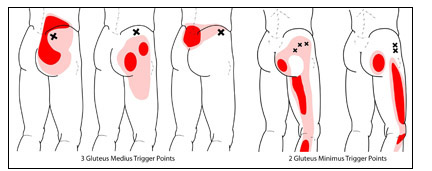Does Dry Needling Help Sciatica? Explore the Benefits and Risks
Introduction
Sciatica is a condition characterized by pain along the sciatic nerve, which affects hundreds of people around the world. Though conventional approaches like medication and physical therapy are widely used, there’s a rising interest in a novel alternative -dry needling- that shows promise and help sciatica. In this blog post, we explore the concept of dry needling, its potential benefits for sciatica, associated risks, and address frequently asked questions.
Understanding Dry Needling
Dry needling involves inserting thin needles into specific trigger points or tense muscle bands to stimulate a therapeutic response. This technique is based on Western medical principles and anatomy and is different from acupuncture. The latter has its origins in traditional Chinese medicine. The focus of dry needling is to reduce pain and dysfunction in the musculoskeletal system.
How Does Dry Needling Help With Sciatica?
- Muscle Relaxation: Sciatica often affects tight muscles that contribute to nerve compression. The purpose of dry needling is to relieve tension, promote relaxation, and reduce pressure on the sciatic nerve.
- Improved Blood Circulation: Needles increase blood flow to the target area, improving oxygen and nutrient delivery. This supports healing and reduces inflammation around the sciatic nerve.
- Pain Regulation: Dry needling affects the nervous system and releases endorphins, which are natural painkillers, to relieve sciatica pain.
- Trigger Point Reduction: Sciatica pain is associated with trigger points or trigger nodes. Dry needling deactivates these points, improving muscle function and reducing pain and hence help sciatica.

Research on Dry Needling for Sciatica
As dry needling becomes more popular, there is increasing scientific evidence supporting its effectiveness for sciatica. Some studies have reported positive results of reduced pain and improved function after sessions. However, researchers need to conduct further studies to explore the long-term benefits and make comparisons with conventional treatments.
Risks and Considerations
- Pain and Bruising: Mild pain or bruising at the injection site is common and usually subsides within 1 to 2 days.
- Risk of infection: Strict sterilization protocols minimize the risk of infection in any skin-penetrating procedure.
- Bleeding: Some people may experience mild bleeding, especially if they are taking blood-thinning medications.
- Rare Complications: Rare but serious complications include nerve and organ damage.
A qualified doctor minimizes these risks.
Frequently Asked Questions (FAQ)
Q1: How long does dry needling treatment for sciatica take?
A1: Sessions typically last between 15 and 30 minutes, depending on the complexity of the case and the trigger points being addressed.
Q2: How many sessions should I take to see noticeable improvement?
A2: Numbers vary. Symptoms may reduce after a few sessions, but additional sessions may be necessary. Contact your provider for customized plans.
Q3: Is dry needling painful?
A3: Senses vary. Some people experience slight discomfort during insertion, while others experience almost no discomfort.
Q4: Can anyone receive dry needling for sciatica?
A4: Not everyone is a good candidate. Consult your doctor, especially if you have a medical condition or are pregnant.
Conclusion
Dry needling is an intriguing option for sciatica and may provide relief by targeting the muscular component. Ongoing research and positive case reports suggest this is promising. Consultation with a qualified medical professional is important to make an informed decision about the potential benefits of dry needling for sciatica. Addressing questions ensures a well-informed approach to treatment and relief.







